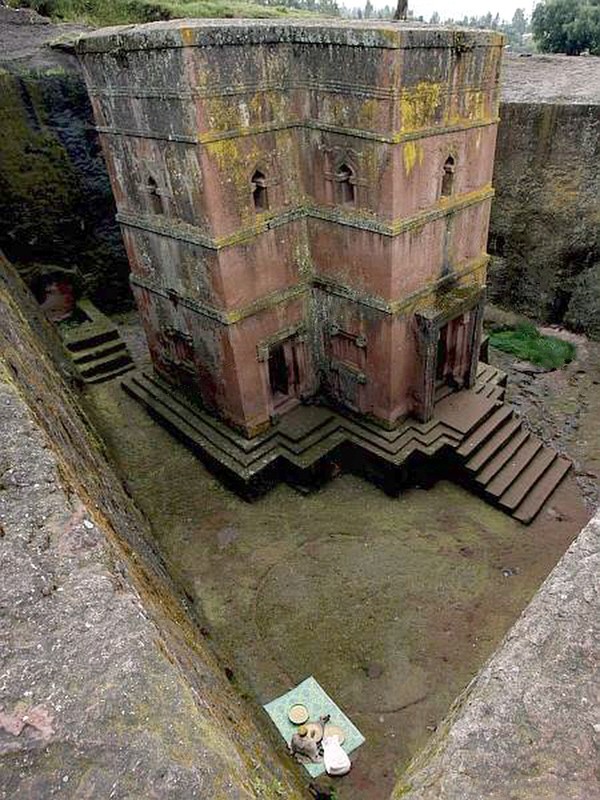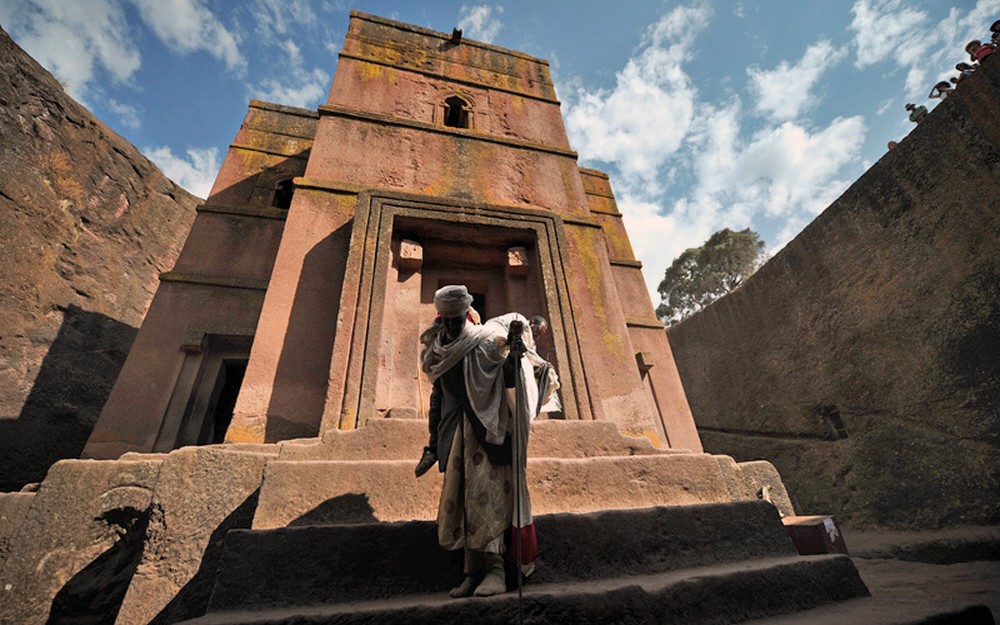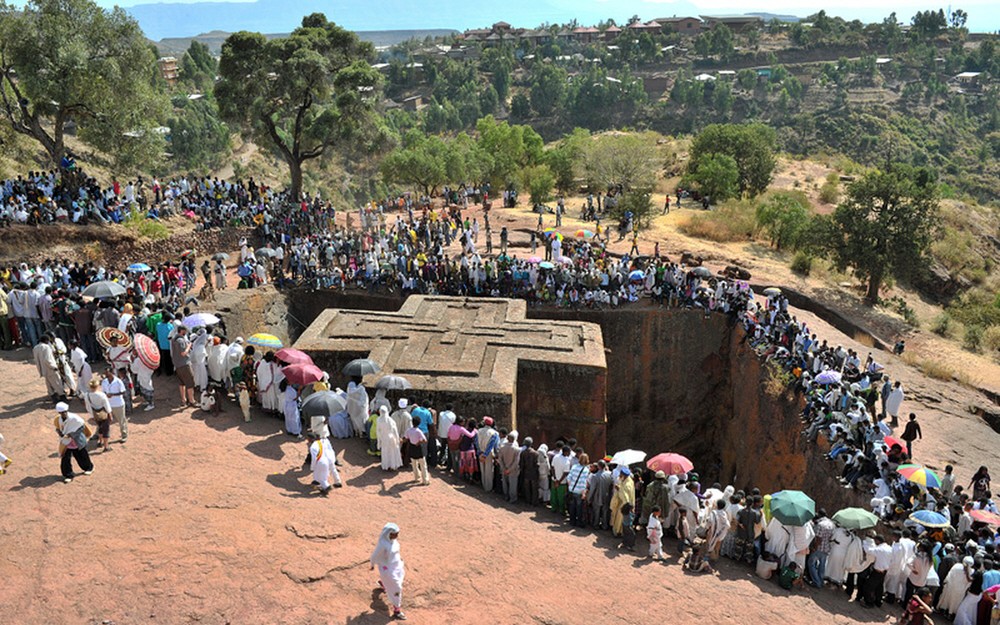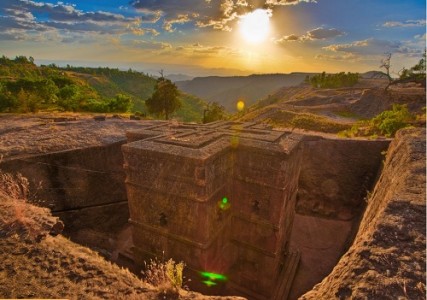The Church of St. George (Amharic: Bete Giyorgis?) is one of eleven monolithic churches in Lalibela, a city in the Amhara Region of Ethiopia. Originally named Roha or Warwar, this historical and religious site is currently accepted in the modern name of Lalibela- after King Gebre Mesqel Lalibela of Ethiopia- considered to be a saint-like figure by the Ethiopian Orthodox Tewahedo Church.
Carved from solid red volcanic rock in the 12th century, it is the most well known and last built of the eleven churches in the Lalibela area, and has been referred to as the “Eighth Wonder of the World”.[1] Lalibela, King of Ethiopia, sought to recreate Jerusalem, and structured the churches landscape and religious sites in such a way as to achieve such a feat. “The churches at Lalibela are clustered in two major groups, one representing the earthly Jerusalem, and the other representing the heavenly Jerusalem. Located directly between them is a trench representing the River Jordan”. The dimensions of the trench are 25 meters by 25 meters by 30 meters, and there is a small baptismal pool outside the church, which stands in an artificial trench.

According to Ethiopian cultural history, Bete Giyorgis was built after King Gebre Mesqel Lalibela of the Zagwe dynasty had a vision in which he was instructed to construct the church; Saint George and God[1] have both been referred to as the one who gave him the instructions.

As of 2006, Lalibela is still a pilgrimage site for members of the Ethiopian Orthodox Tewahedo Church; the church itself is part of the UNESCO World Heritage Site “Rock-Hewn Churches, Lalibela



Source: Wikipeadia









